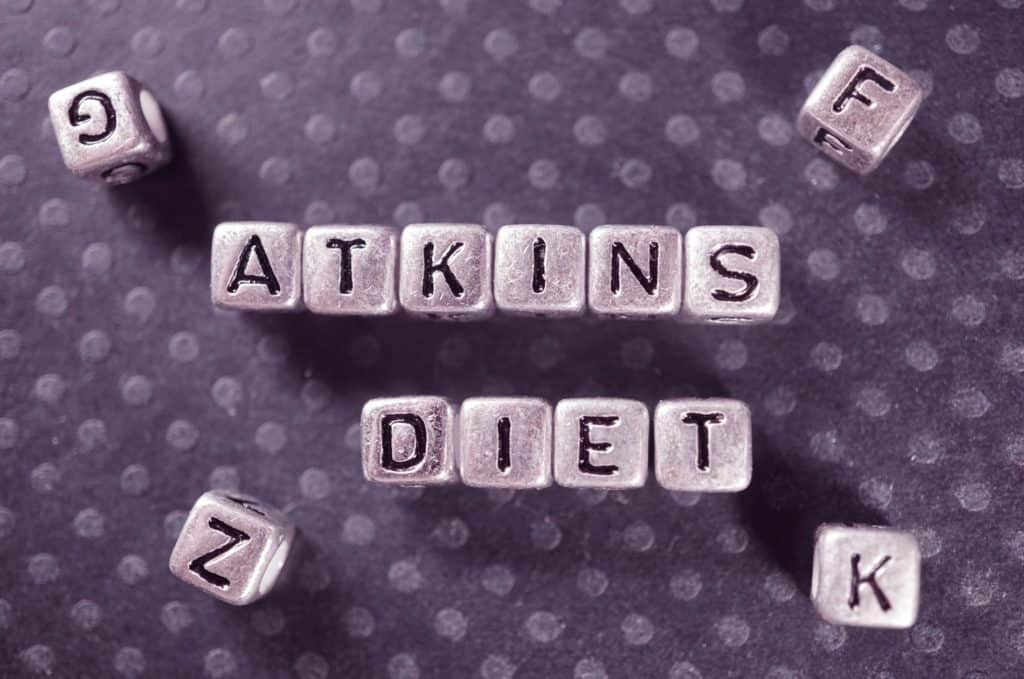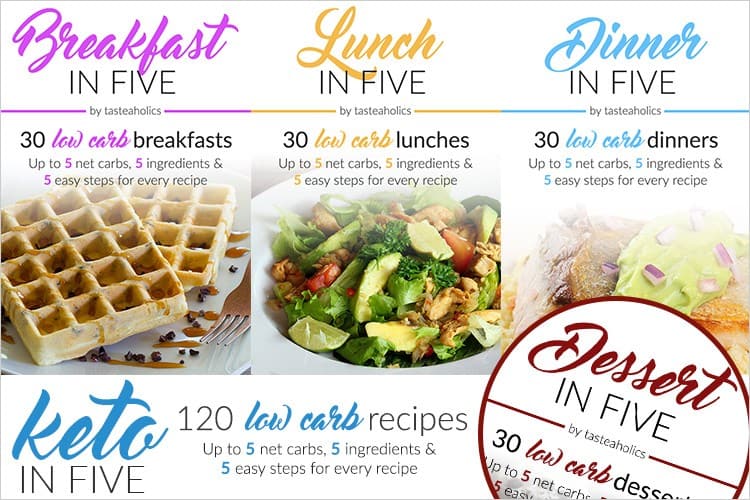
The Atkins diet is one of the most famous low-carb ketogenic diets. Not as severe as a straight ketogenic diet and thereby making it easier to stay compliant with the diet rules.
When you start the Atkins Diet you achieve ketosis but as the diet progresses you eventually will fall out of ketosis due to consuming up to 100 grams of carbs a day.
The original program was created in the 1960s by a cardiologist named Robert Atkins, who has since gone through many changes to his plan for people with weight loss or health goals.
The Atkins diet is a low-carb, moderate-protein, high-fat diet.
Though Atkins has evolved to offer a variety of plans, the original version (now called Atkins 20) is still the most popular. It’s broken down into four phases, which are based on your daily net carb (total carbs minus fiber and sugar alcohols) allowance:
The Atkins diet is an effective weight loss program that can help individuals shed pounds quickly. It’s also a great way to maintain your current body size or improve health because it includes healthy fats and good quality proteins, such as fish.
A unique feature of the Atkins diet plan is that it relies on knowing how many carbohydrates you are eating. This can be calculated by counting your net carbs, which equals total grams of carbohydrates minus fiber and sugar alcohols or glycerin.
The Atkins diet is designed for people with different levels of net carbs intake per day. The company recommends that you check with your healthcare provider before choosing a program to manage a medical condition, as the best one could be personalized specifically just for you!
Atkins 20
For those who are looking to lose weight fast and have over 40 pounds to shed, the Atkins 20 plan may be just what you need.
This is typically considered a more traditional version of a ketogenic low carb high-fat diet that requires participants to eat only twenty net carbs per day for two weeks before adding in other fiber-rich carbohydrates five grams at a time until they reach their goal weight or come up with an appropriate maintenance diet on their own.
On Atkins 20 you start by consuming 20 Net carbs per day and gradually you add more net carbs in 5-gram increments. until you find your perfect net carb intake.. A balance between feeling energized while still losing body fat albeit at a slower healthier rate.
There are 4 phases in the Atkins 20 Diet
[grwebform url=”https://app.getresponse.com/view_webform_v2.js?u=yhX3C&webforms_id=27444203″ css=”on” center=”off” center_margin=”200″/]
Phase 1
Induction Phase: For two weeks or longer, dieters keep their net carbs at the lowest level. The phase allows for up to 25 grams of Net Carbs until your within 7 kg (About 15 pounds) of your goal weight.
Phase 2
Balancing Phase: The idea behind this program is to find the sweet spot of carbs where you’re feeling your best. While still losing weight This phase allows for up to 50 grams of Net Carbs until you are 5 kg (about 10 pounds) from your goal weight
Phase 3
Fine Tuning Phase: Dieters are asked to make small changes to reach and maintain the desired weight for a month. you Net Carb allowance is raised to 50-80 grams of Net Carbs until you have reached your goal weight.
Phase 4
Lifetime Maintenance Phase: Take the lessons learned from the previous 3 phases by eating a healthy low-carb diet to maintain your goal weight. This phase allows for up to 80-100 grams of Net Carbs
Atkins 40
This is geared towards people who have less than 40 pounds to lose. Most diets are geared towards one or two food groups, but Atkins 40 is different.
This plan allows dieters to eat from all the major food groups on day 1 of their weight loss journey which may help individuals feel more satisfied and less deprived than other diets.
In this program, you start the first phase of the plan by consuming 40 grams of net carbs per day from vegetables, fruits, nuts, and other sources.
As dieters approach their goal weight they add in 10 more increments to find out what works best for them personally!
Atkins 100
For those who want to maintain their current weight, prefer the widest variety of food choices, or are pregnant and have approval from your healthcare provider, this is the perfect Atkins eating program.
For some people, maintaining a healthy diet can be difficult when there’s so much temptation on every corner.
The main goal for these individuals may not always be about losing weight but rather staying at an ideal BMI range while still being able to eat whatever they please – which means that you’ll never find yourself feeling deprived with this most relaxed type of Atkins plan.
Atkins plans are typically structured around three meals and two snacks per day so your blood sugar remains stable throughout the day without counting calories or weighing portions like on other diets because they’re based solely on net carbs (what is left of carbohydrates after subtracting fiber).
You’ll also need to make some adjustments such as limiting certain foods including added fats which can add unnecessary pounds if not monitored carefully – these types of changes will help keep cravings under control while still providing enough energy needed for daily
Fruits, vegetables, and legumes are all encouraged on the Atkins Diet.
On Phase 1 of their eating plan (the most restrictive phase), individuals should still consume 12-15 grams of net carbs from foundational veggies per day.
Starting with phase 2 You can include fruits or legumes in Phase 2, and try a variety of dishes each day with no restrictions on what to eat!
Meat and cheese are not required on the Atkins plan. If you prefer to eat meat at all, then it is encouraged in moderation.
However, processed meats with nitrates should be avoided for best results as they can cause side effects including headaches or heart problems down the line.
On a positive note though there will always be an abundance of delicious plant-based proteins that make sure you never run out of options when trying to stay healthy while still eating what tastes good!
After two weeks on Atkins 20, you can add berries and nuts to your diet in 5 net carb increments. This is a great way to get more fiber without worrying about their carbs!
The Atkins diet is one of the more effective weight loss methods for those who are looking to shed pounds.
One study found that people on this plan lost a whopping 12 pounds in just two months, which was by far their highest rate of success out of any other type studied!
On the Atkins diet, you do not need to count calories but instead carbohydrate intake.
This may seem like a blessing for some of us that are too busy and stressed out by life’s demands to keep up with this task; however, if we don’t monitor carbs or plan our meals accordingly then it can lead us down an unhealthy path.
That is why there is also the option to purchase pre-packaged foods from companies such as Atkins who already have all your nutritional needs in mind!
Pros and Cons of The Atkins Diet
| Pros | Cons |
|---|---|
| Rapid Weight Loss | Restrictive Diet |
| No Calorie Counting | High Consumption of Fats |
| Not as expensive as some diets | Must count net carbs |
| Proven Diet | Can Cause Keto Breath and Flu |
| Not as Time Consuming | Fatigue and Weakness at the start |
| Unlimited high Protein and Fatty Foods | Limited Carb Choices |
| No Hunger Pangs | Possibly Increases “Bad” Cholesterol |
Conclusion
While the Atkins Diet starts out as a keto diet it does have some differences that make it an interesting alternative to other low-carb diets.
There are some health benefits as recent studies have shown that this diet out of all the low-carbohydrate diets, and other popular diets the Atkins Diet showed meaningful short-term and long-term weight loss (More than 12 months).
This is not a starvation low-calorie diet designed for quick results that result in weight gain after the crash diet is over.
What I like about the Atkins Diet is the less restrictive intake of carbohydrates and more protein than a typical ketogenic diet. While the induction phase of the diet will produce ketone bodies at the early stages of the diet you are in ketosis for only a short period of time then you will raise your intake of carbohydrates and diversify your carbohydrate intake.
Dyson, P.A., Beatty, S., and Matthews, D.R. (2007). A low-carbohydrate diet is more effective in reducing body weight than healthy eating in both diabetic and non-diabetic subjects. Diabet Med., 24, 1430–1435.
Ogden C. L., Carroll, M. D., Kit, B.K., & Flegal K. M. (2014). Prevalence of childhood and adult obesity in the United States, 2011-2012. Journal of the American Medical Association, 311(8), 806-814.
Santos F.L., Esteves S.S., da Costa Pereira A., Yancy W.S., Jr., Nunes J.P. (2012). Systematic review and meta-analysis of clinical trials of the effects of low carbohydrate diets on cardiovascular risk factors. Obes Rev., 13(11): 1048–1066.
The State of Obesity: Better Policies for a Healthier America. (2014, September). Retrieved from http://healthyamericans.org/report/115/
Recent Posts
How To Reverse Fatty Liver Disease Through Diet (7 Day Sample Diet)!
Is A Fatty Liver Reversible? Fatty Liver Diet Plan and Menu Here we tell you everything you need to know about the fatty liver diet, menu, recipes, tips, and tricks. Did you just get diagnosed...
How to lose weight for teenage girls. A complete guide with tips
Lose weight and surprise your friends with your transformation. Follow our exclusive weight loss tips, healthy diet, and workout routine for teenage girls-all backed by science and recommended by...


